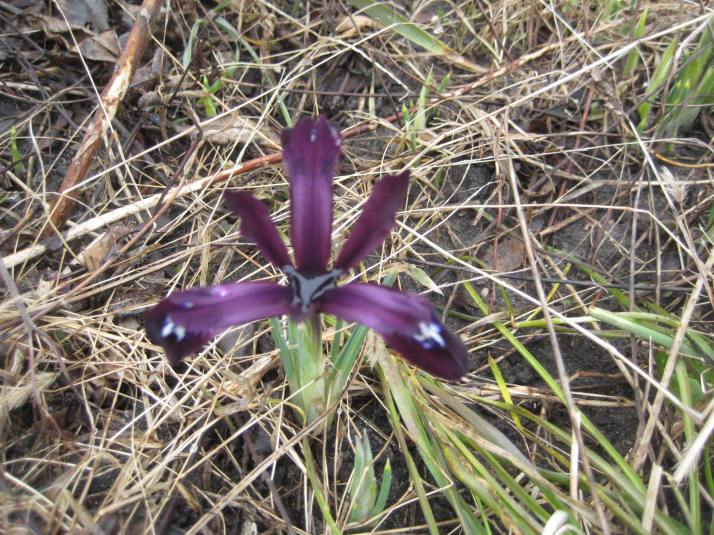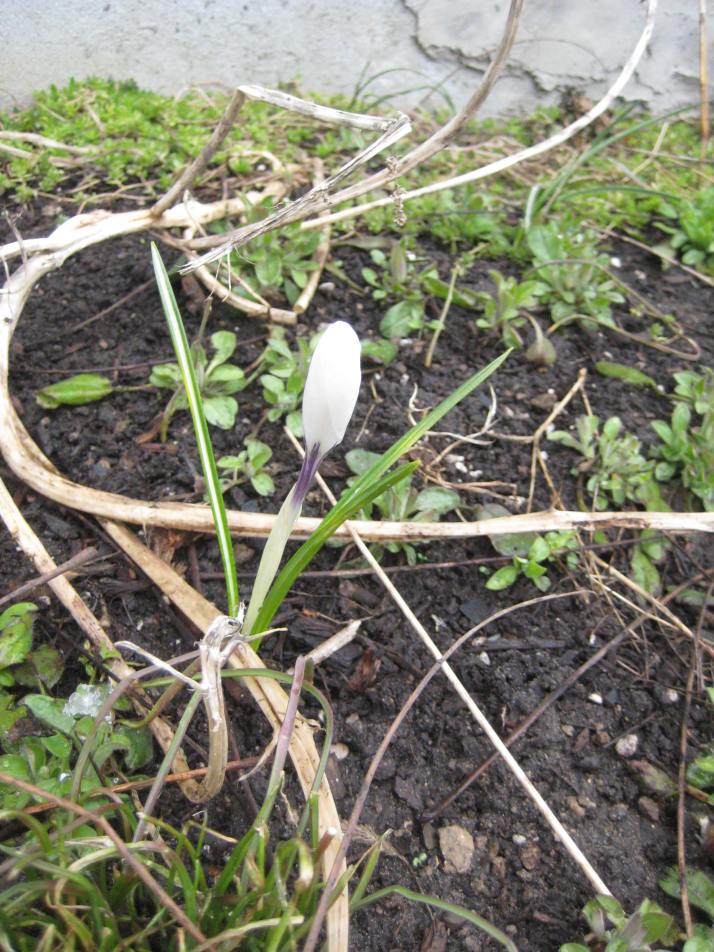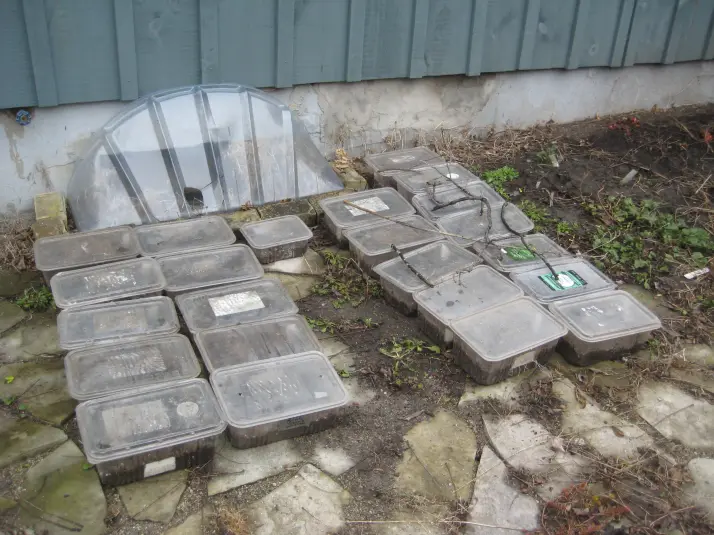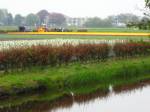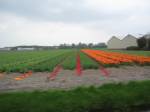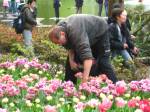Some will tell you that if you have the wonderful shade tree that are black walnut trees, that you are doomed to a garden of hostas and little else… NOT SO! I have killed my share of plants in my pursuit of a colourful English Cottage style garden in the back yard garden with Black Walnut trees in the SW, NW, and NE corners. My ~55′ wide by ~ 35′ deep back yard is made even shadier by the non-fruiting mulberry & catalpa in the SE corner.
Upon interviewing other SW Ontario, Canadian gardeners with Black Walnut trees, it became clear that some of the failures I had ascribed to the black walnuts, are more about sufficient sunlight, than about the juglone that the black walnut puts out through it’s roots. Juglone is also present in all parts of the tree; the leaves, twigs, nuts and branch litter. Many sources say that a thorough fall cleanup can greatly reduce the concentration of juglone in the soil. However the juglone from the roots will persist in the soil for several years, even after the tree is taken down. Because of their juglone content, composted black walnut leaves should not be used around non-black walnut tolerant plants.
I also have a post about black walnut tolerant edibles here.
For more basic information on Black Walnuts, I’ll direct you to: https://en.wikipedia.org/wiki/Juglans_nigra
Many thanks to gardening guru Sophia, friends in Seaforth, and neighbour Marilyn, amongst others for helping me build this list!
Perennials:
aconitum carmichaelii, fall monkshood blue
aconitum napellus, summer monkshood blue
agastache azureum, licorice flower blue
ajuga reptans, bugleweed blue
anchusa azurea, 4’ relative of forget-me-nots
aquilegia sp., columbine
baptisia australis, false indigo blue (with enough sun)
centaurea dealbata Persian cornflower hot pink
centaurea montana bachelor’s buttons blue
clematis sp. needs sun to flower
convallaria majalis lily of the valley white
dicentra spectabilis bleeding heart
doronicum Leopard’s Bane yellow
echinacea purple coneflower
echinops ritro, globe thistle blue
gallium odoratum sweet woodruff white
geranium sp. cranesbill geranium
hedera helix – English ivy plain
heliopsis helianthoides ‘Lorraine Sunshine’ false sunflower 3’ yellow
hemerocallis sp., daylilies
hesperis matronalis, Dame’s Roquet, false phlox, purple or white
hieracium spilophaeum, ‘Leopard’ Hawkweed yellow
hosta
iris sp. bulbs, corms, roots incl. Siberian iris
lamium sp.
leucanthemum vulgare, oxeye daisies
lilium sp. bulb lilies – may be short lived
linaria, Toadflax
lupinus polyphyllus, lupines
lychnis coronaria, kitten’s ears – rose campion
lysimachia nummularia, creeping jenny
monarda didyma, red bee balm
phalaris arundinacea, ribbon grass
phlox paniculata, garden phlox
phlox subulata, moss phlox
physostegia virginiana, obedient plant ‘Vivid’ purple
platycodon grandiflorus, balloon flower blue
pulmonaria officinalis, lungwort
rosa, roses
sedums sp., various
stachys byzantina, lamb’s ears, pale pink
tanacetum parthenium, feverfew white
tradescantia virginiana, spiderwort ‘Navaho Princess’ white
valerian officinalis, valerian white
veronica gentianoides, light blue with darker blue veining 20”
veronica peducularis, creeping speedwell royal blue groundcover
veronica spicata, spike speedwell, ~1’ tall medium blue
vinca minor, periwinkle blue
viola sororia, common violet
Carolinian / SW Ontario Canada Natives:
achillea millefolium, white yarrow
actea racemosa, black cohosh white
aquilegia canadensis, yellow / red columbine
agastache, dark blue or white licorice flower
alcea rugosa,(?) butter yellow hollyhock with fig leaves
aster sp.
blephilia ciliata, downy wood mint
cimicifuga racemosa, black cohosh white (aka actea r.)
coreopsis lanceolata ,yellow coreopsis
echinacea sp., purple coneflower
erythronium americanum, trout lilies
eupatorium, Joe Pye weed
heliopsis helianthoides ‘Lorraine Sunshine’ false sunflower 3’
lupinus perennis, native blue lupine
monarda fistulosa, native purple bee balm
oenothera fruticosa subsp. glauca, yellow evening primrose
penstemon sp.
phlox divaritica, blue woodland phlox
phlox stolonifera, creeping phlox blue
physostegia virginiana White native obedient plant
polygonatum commutatum, Solomon’s Seal white
rudbeckia laciniata 6’ yellow
rudbeckia hirta 2’ garden variety black eyed Susans
rudbeckia nitida, 7’ late season needs staking if in windy area
solidago sp., goldenrod
stylophorum diphyllum, yellow Celandine poppy
tradescantia virginiana, Virginia spiderwort, blue
trillium
Annuals & Biennials:
Antirrhinum sp. snapdragons
Cerinthe major ‘purpurascens, honeywort
Cheiranthus cheiri, wallflower
Cleome hassleriana, spider flower
Cosmos bipinatus, cosmos
Erysimum cheiri, wallflower (aka Cheiranthus)
Ipomoea purpurea, morning glories
Mirabilis jalapa, four o’clocks
Myosotis sylvatica, forget me nots
Petunia x hybrida, petunias
Tagetes sp., marigolds
Viola tricolor, Johnny-jump-ups
Viola x wittrockiana, pansies
Shrubs:
Cercis canadensis, eastern redbud
Cornus sericea, redosier dogwood
Euonymus elata, Burning bush
Euonymus sp.
Exochorda x., ‘The Bride’ Pearl bush
Hibiscus syriacus, Rose of Sharon, better at drip edge
Kerria japonica, yellow pompom flowers in spring
Ligustrum vulgare, Privet – grows very slowly, better beyond drip edge
Lindera benzoin, Spicebush
Philadelphus coronaria, Mock Orange – fine under canopy
Weigela florida, Weigela (mine succumbed after several years – possibly from lack of water in sandy soil)
Bulbs:
Acidanthera muriellae – fairy glads
Allium sp.
Canna indica, canna lilies
Chionodoxa – glory in the snow
Crocus sp.
Daffodils- narcissus
Dahlias
Galanthus, snowdrops
Hyacinthus, giant hyacinths
Iris danfordiae, dwarf bulb iris
Iris germanica, bearded iris
Iris x hollandica, Dutch iris (florist iris)
Iris reticulata, dwarf bulb iris
Muscari, grape hyacinths blue
Narcissus, daffodils
ornigothalum umbellatum, Star of Bethlehem white
Pushkinia, white with blue veining
Scilla, Siberian squill blue
Tulipa sp.


